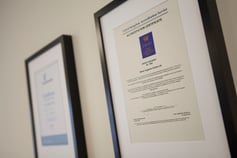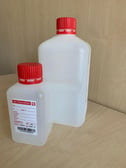.jpg?width=720&name=Supporting%20pics%20(1).jpg)
We regularly get calls and messages from people asking if we can do ‘legionella testing’ for them. Sometimes it becomes apparent that they aren’t sure what they are actually asking for, or why!
This confusion comes from people being aware that they have a responsibility to manage water hygiene risks but they have no technical background to understand how to do it. In this blog we will look at this question and hopefully help you to understand what YOU need.
The most common misunderstanding is the difference between the ongoing monitoring of the water systems installed at site to prevent the conditions that may allow the growth of bacteria and the analysis of water samples at a laboratory.
What do we NEED to do?
Under the Health & Safety at Work etc. Act 1974, there is a responsibility “to ensure the health, safety and welfare of employees, clients, patients, customers, contractors, visitors and others”. This starts with carrying out a Legionella risk assessment, the size and complexity of this assessment is directly related to the size and complexity of the water system you have.
The actions recommended from this Legionella risk assessment will include the monitoring of the system conditions, sometimes people misinterpret this as ‘legionella testing’. This monitoring will include reviewing the temperatures of the hot and cold water systems and carrying out ongoing inspections and maintenance. But at no point during this routine monitoring are we testing the water for the presence of any kind of bacteria.
However, there are certain circumstances where analysis of the water in your system(s) at a lab IS required, but what are these?
- If you have a cooling tower / evaporative condenser;
- If you have a spa;
- If your water comes from a private water supply;
- If you have any susceptible patients;
- When you are suspected, or confirmed, as being the source of an outbreak;
- When your control measures have broken down;
- Where you have a ‘supplemental’ control measure being used;
- Where the Legionella risk assessment deems it necessary due to the issues found.
Deciding how many samples, from what locations and how often these should be collected is determined by the risks posed and is not something we can answer here. However, these samples should be collected following ‘BS7592:2008 Sampling for Legionella organisms in water and related materials’, with analysis carried out by an independent UKAS accredited laboratory. Alternative quantitative testing methods may be used as long as they have been validated using ISO 17994:2004 and meet the required sensitivity and specificity.
P lease remember that the results you receive from these samples are a ‘snap shot’ in time and only reflect the analysis of the sample collected. There are known issues with trying to grow the bacteria consistently and the ‘luck’ of capturing any bacteria that may be ‘floating’ in the sample you collect. It is therefore more important to ensure that your system(s) are designed, operated and maintained within the current guidelines rather than relying on taking water samples to try to prove there is no legionella in the water.
lease remember that the results you receive from these samples are a ‘snap shot’ in time and only reflect the analysis of the sample collected. There are known issues with trying to grow the bacteria consistently and the ‘luck’ of capturing any bacteria that may be ‘floating’ in the sample you collect. It is therefore more important to ensure that your system(s) are designed, operated and maintained within the current guidelines rather than relying on taking water samples to try to prove there is no legionella in the water.
Hopefully you found this helpful and can at least answer this question:
Do you need to test your water for the presence of legionella pneumophila???
Feel free to reach out if you have any questions about this blog or if you would like to consult with one of our experts for further advice on water hygiene.
Editor’s Note: The information provided in this blog is correct at date of original publication – August 2020.
© Water Hygiene Centre 2020








